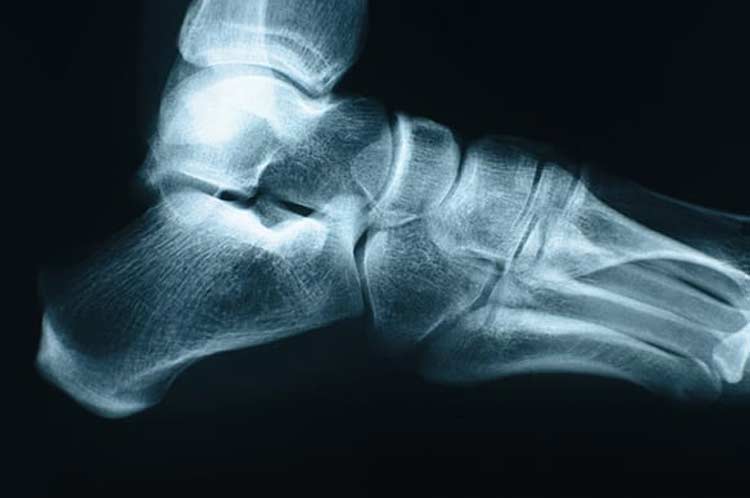
Discover how we can help you find relief from foot and ankle fractures.
A broken bone is also referred to as a fracture. A bone can break in several different ways, with variations ranging from tiny breaks (stress or hairline fractures) to breaks that shatter a bone into multiple pieces. Bones are designed to be fairly durable with some degree of flexibility. Even so, there are actions and conditions that may contribute to a fracture.
- Some breaks will heal on their own while others may require more extensive treatment.
- Fractures can be especially problematic when bones of the feet are involved.
Types of Fractures
A foot fracture can be stable, which means the broken parts of the bone are still aligned correctly. An open, compound fracture may result in a piece of bone breaking through the skin. In some situations, there may be an open wound without the fractured bone being visible. With a transverse fracture, a break occurs in a horizontal line. A comminuted fracture is one where the bone shatters into three or more pieces. When an oblique fracture happens, the break will produce an angled pattern.
Stress Fractures
Stress fractures are the type of fractures most likely to affect weight-bearing bones like those found in ankles and feet. They are unique in that little or no discomfort may be felt. However, pain may become more distracting over time. Track and field athletes and competitive runners often experience fractures of this nature.


Causes and Symptoms
Breaks that affect feet are often caused by a sudden change in intensity of an activity or starting a new activity too quickly to allow cells and bone tissues to recover from the added stress. Repetitive motion, a diet lacking in the nutrients bones need to stay strong, and sudden trauma may also cause fractures to occur.
Preexisting foot conditions or deformities and conditions that affect bone strength such as osteoporosis sometimes weaken bones of the foot enough to cause a break. When a bone is broken or cracked in any way, symptoms experienced may include:
- Pain in the affected area
- Visible redness or swelling
- Ankle or foot bones look out of place
- Bruising
Diagnosing Foot Fractures
Following an initial examination, a fracture may be diagnosed with an X-ray. If a stress fracture is suspected, a bone scan may be done since smaller fractures may not be apparent on standard X-rays immediately after the injury occurs. An MRI or CT scan usually provides a more detailed view of bones and soft tissues to determine the extent of the damage.
Non-Surgical Treatments
Immediately applying ice can reduce the swelling that usually results from a fracture. Walking boots, braces, or crutches may be used by patients reduce or eliminate pressure on the affected part of the foot while the broken bone heals. With more extensive fractures, bones in the foot will need to re-positioned. A plaster or fiberglass cast or one that’s more functional may be applied to the affected foot.
Surgical Options
When a fractured bone of the foot or ankle isn’t able to be treated with non-surgical options, surgery may be performed, with open reduction and internal fixation being one of the most common procedures. Surgery may also be done to facilitate healing or repair related damage to tissues in and around the affected part of the foot or ankle.
Preventing Foot Fractures
On average, people experience two fractures during their lifetime. The best way to reduce your risk of sustaining a broken bone is to avoid excessive stress or pressure on your feet as much as possible. Wearing proper footwear for whatever activity you are engaged in can also help minimize the risk of sustaining a fracture. For instance, shoes for running or playing soccer should provide support and protection for the part of the foot that’s going to absorb the most impact from foot movements. Foot fractures may also be prevented by:
- Maintaining a healthy weight to avoid over-stressing feet
- Getting enough vitamin D and calcium to keep bones strong and healthy
- Paying attention to form and technique when jogging or running
- Being cautious when changing from one running surface to another
- Taking breaks if you notice increased discomfort around feet or ankles
If you feel acute (sudden) pain following a hard blow or a sharp twist of a foot, or you’re suddenly unable to stand, walk, or run without extreme pain and instability, stop what you’re doing and seek medical attention. A podiatrist can determine if the resulting discomfort is due to a fracture or damage to tendons, ligaments, or muscles that support your feet and ankles. Visible fractures that have broken through skin should also be treated and evaluated immediately to prevent infection.

